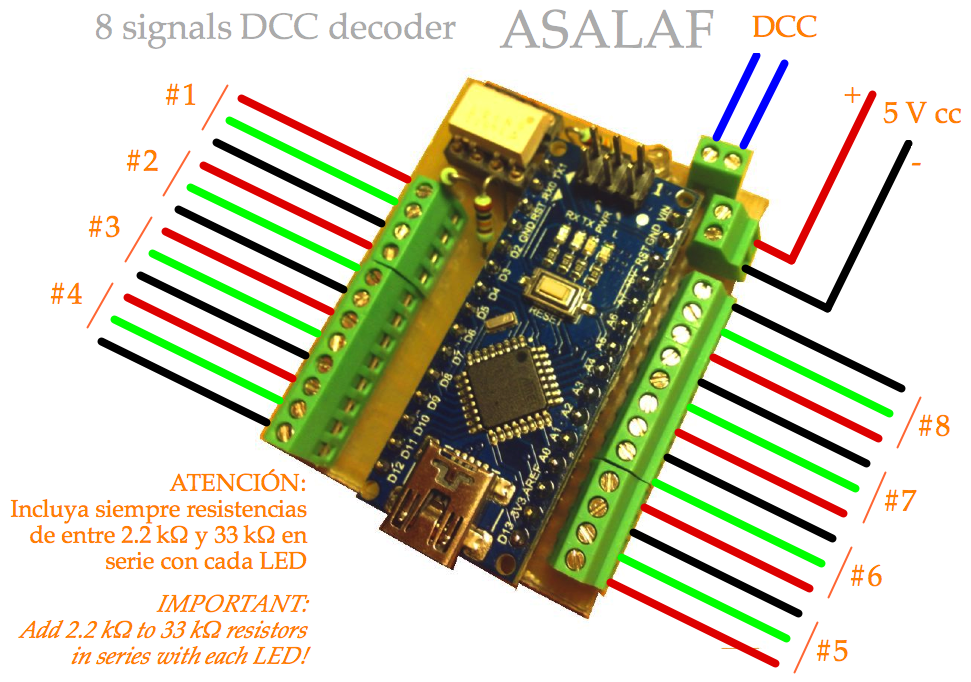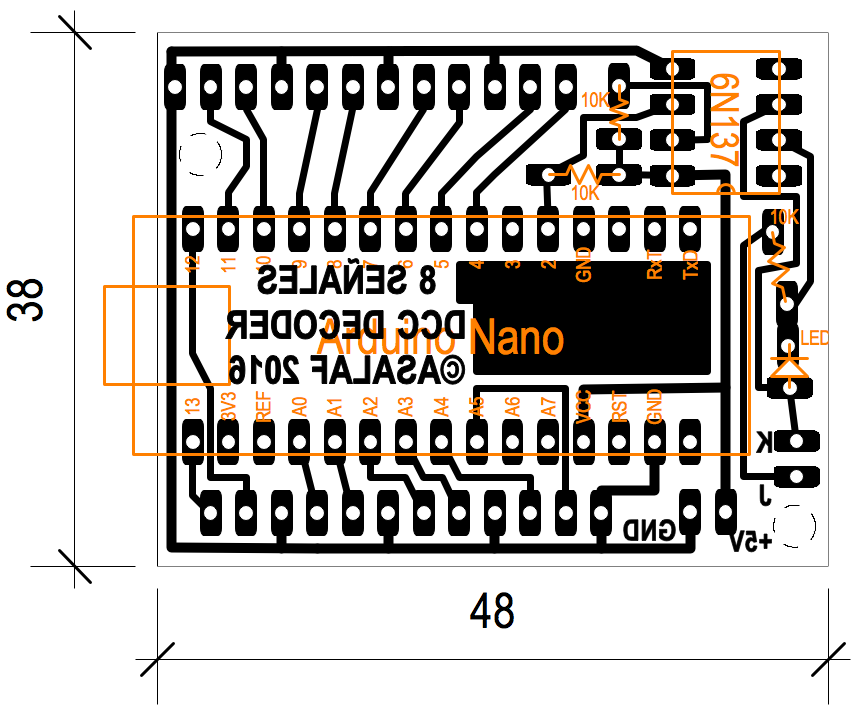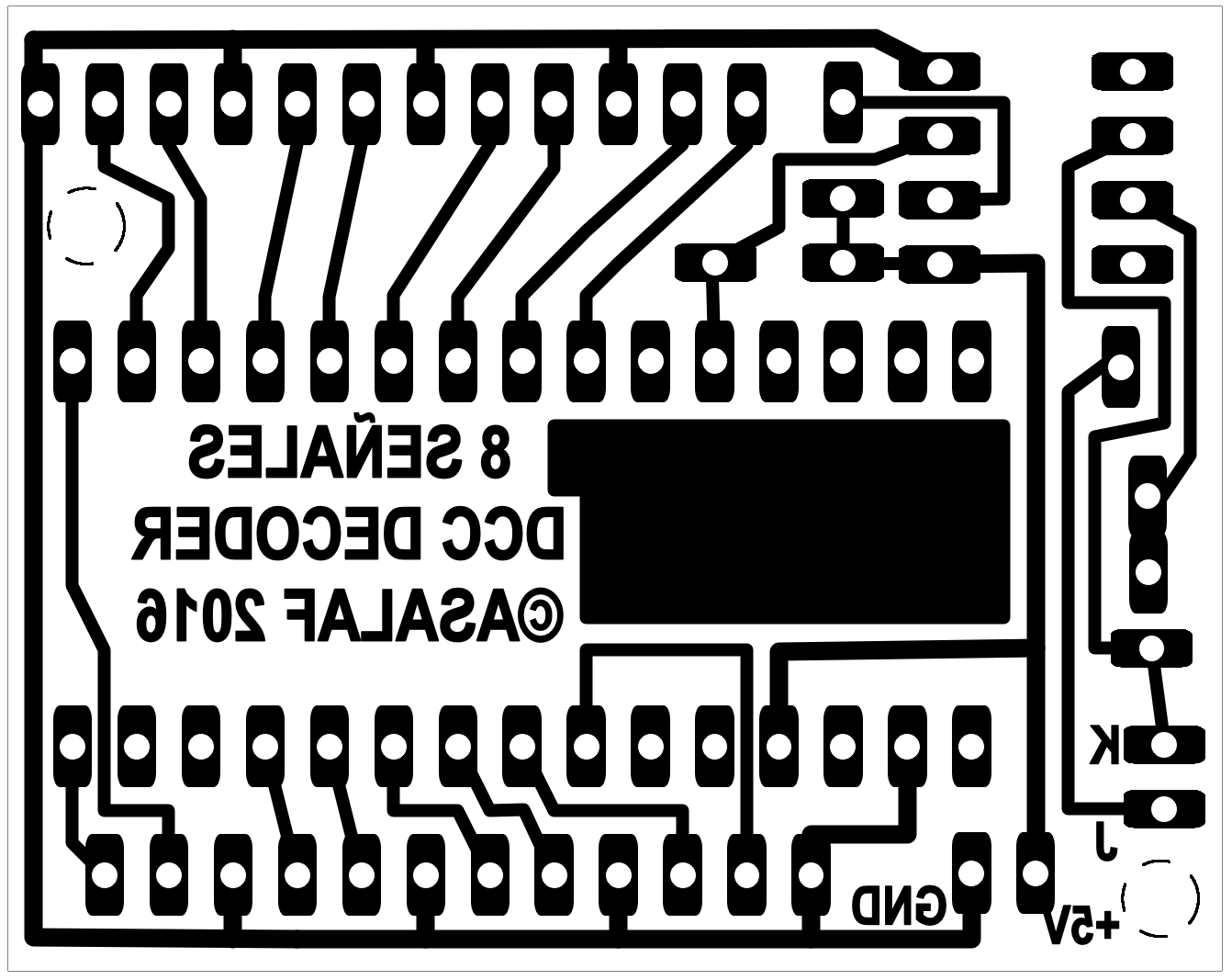- Norberto
- Digital
- Read Time: 1 min
|
COMPONENTES |
THE COMPONENTS |
|
|
VIDEO |
THE VIDEO |
|
| Arriba |
On top |
|
EL CÓDIGO FUENTE |
THE MAIN CODE |
|
/* Arduino Nano Pro as
- WAV sound files player (24 kHz - 8 bit - mono)
- 1 servo controller - variable speed -
- 2 alternating common cathode led controller
Using:
- 2 current sensing occupancy detectors
- 1 contact occupancy detector
- 1 infrared occupancy detector
- SD card reader
Code by Norber, February 2016
Freely distributable for private, non commercial, use.
Connections:
SD card GND to GND common
SD card MISO to ARD pin 12
SD card SCK to ARD pin 13
SD card MOSI to ARD pin 11
SD card CS to ARD pin 10
SD card 5Vcc to +5 V cc
ARD pin 3 to transistor driven 8 ohms 5V loudspeaker
*/
#include
#include
#include
#define INIT 10
#define DETECTING 20
#define ALARMS_ON 25
#define LOWING_BAR 30
#define BAR_DOWN 40
#define LIFTING_BAR 50
#define ALARMS_OFF 60
#define ERROR_UNKN 90
#define SENSIB 10
#define PIN_K1 8
#define PIN_K2 6
#define PIN_K3 7
#define PIN_IR 2
#define PIN_SERVO 5
#define PIN_LED1 A2
#define PIN_LED2 A3
#define PIN_LED3 A4
#define PIN_LED_PCB A1
#define PIN_SOUND 3 // Must be 3: OC2B is pin3 - used for playing 8-bit WAV
#define HYSTER 30000 // Interval between alarms and barriers
#define DOWN_POS 2400
#define UP_POS 4000
#define INCR_SV 5
#define VEL_SER 1
#define BLINK_DEL 15 // Led blinking rate
byte sysEst = INIT;
boolean k1St, k2St, k3St, irSt, bellsOn, ledsOn;
volatile int posObj, posNow;
volatile boolean servMoving;
TMRpcm player;
void setup() {
pinMode(PIN_K1, INPUT_PULLUP);
pinMode(PIN_K2, INPUT_PULLUP);
pinMode(PIN_K3, INPUT_PULLUP);
pinMode(PIN_IR, INPUT_PULLUP);
pinMode(PIN_LED1, OUTPUT);
pinMode(PIN_LED2, OUTPUT);
pinMode(PIN_SERVO, OUTPUT);
pinMode(10, OUTPUT);
//Serial.begin(9600);
if (!SD.begin(10)) {
// Serial.println("SD card error");
return;
}
//Serial.println("SD card OK");
cli();
TCCR0A = 0;
TCCR0B = 0;
TCCR0B |= (1 << CS02) | (1 << CS00); // Set CS00 & CS02 bits for 1024 prescaler on Timer0 - LEDs
OCR0A = 234; // Comp Match every 15 ms (66.67 Hz)
TIMSK0 = 0;
TIMSK0 |= (1 << OCIE0A); // Enable Timer0 interrupts for Compare Match A
TCCR1A = 0;
TCCR1B = 0;
TCCR1A |= (1 << WGM11); // Turn on Fast PWM mode
TCCR1B |= (1 << WGM13) | (1 << WGM12); // Turn on Fast PWM mode
TCCR1B |= (1 << CS11); // Set CS11 bit for 8 prescaler (0.5 µs) on Timer1 - Servos
ICR1 = 40000; // Set PWM fixed frequency (overflow every 20 ms)
TIMSK1 = 0;
TIMSK1 |= (1 << OCIE1A) | (1 << TOIE1); // Enable Timer1 interrupts for Compare Match A & Overflow mode
sei(); // Activar interrupciones
player.speakerPin = PIN_SOUND;
player.setVolume(1);
player.volume(1);
player.loop(1);
player.play("Campo3.wav");
sysEst = DETECTING;
posNow = UP_POS;
}
boolean readSensors() {
static int cntr, k1Count, k2Count, k3Count, irCount;
static boolean result;
k1Count += digitalRead(PIN_K1);
k2Count += digitalRead(PIN_K2);
k3Count += digitalRead(PIN_K3);
irCount += digitalRead(PIN_IR);
if (++cntr == SENSIB) {
if ((k1Count == 0)||(k2Count == 0)||(k3Count)||(irCount == 0)) result = true;
else result = false;
cntr = 0;
k1Count = 0;
k2Count = 0;
k3Count = 0;
}
return result;
}
void loop() {
static unsigned int cntr;
static boolean detection = readSensors();
switch (sysEst) {
case DETECTING:
if (detection) {
sysEst = ALARMS_ON;
}
break;
case ALARMS_ON:
if (bellsOn == false) {
player.play("Bells1.wav");
bellsOn = true;
ledsOn = true;
}
if (++cntr == HYSTER) {
sysEst = LOWING_BAR;
posObj = DOWN_POS;
servMoving = true;
cntr = 0;
}
break;
case LOWING_BAR:
if (servMoving == false) {
sysEst = BAR_DOWN;
}
break;
case BAR_DOWN:
if (detection == false) {
if (++cntr == HYSTER) {
sysEst = LIFTING_BAR;
posObj = UP_POS;
servMoving = true;
cntr = 0;
}
}
break;
case LIFTING_BAR:
if (servMoving == false) {
sysEst = ALARMS_OFF;
}
break;
case ALARMS_OFF:
if (++cntr == HYSTER) {
player.play("Campo3.wav");
ledsOn = false;
bellsOn = false;
PORTC &= 0xF3;
cntr = 0;
sysEst = DETECTING;
}
break;
case ERROR_UNKN:
ledsOn = true;
break;
}
}
ISR(TIMER0_COMPA_vect) { // Timer0 Compare Match interrupt every 15 ms
static int cntr;
if (ledsOn && (++cntr == BLINK_DEL)) {
if (PINC & 0x04) (PORTC &= 0xF3) |= 0x08; // Toggle pinA2 and pinA3 alternatively
else (PORTC &= 0xF3) |= 0x04;
cntr = 0;
}
}
ISR(TIMER1_OVF_vect) { // Timer1 Overflow interrupt for servo every 20 ms
static int dif;
if (servMoving == true) {
dif = posNow - posObj;
if (dif < 0) posNow += INCR_SV;
else if (dif > 0) posNow -= INCR_SV;
else servMoving = false;
PORTD |= (1 << 5); // Servo is pin5
OCR1A = posNow;
}
}
ISR(TIMER1_COMPA_vect) { // Timer1 Match Compare A interrupt for servos
PORTD &= ~(1 << 5);
}
|
ADD-ONS (LIBRERIAS Y OTROS ARCHIVOS) |
THE ADD-ONS (LIBRARIES AND OTHER FILES) |
|



